This article will outline how I used woven boning and Fosshape to create an armor look. The end result is not strong enough to be armor, it is light weight and rigid enough to hold the shape but not rigid enough to withstand any impact. I’m creating a “woven bone” aperture and then draping Fosshape over it to create the outer surface. FYI this is my first attempt doing anything like this.
The “armor” that I made is a single shoulder shield, decorated with leaves. My plan is that it will be the colour of oxidized copper “verdigris” but at this point I’ve not found paint options (in my town) that will allow me to get this look. I may have to settle with tarnished silver.
The armor is shown above on black dress-form, against a black backdrop. I’ve put a white corset on the dress-form so that you can see how the armor will sit, although it is not hugging the waist in this image and it is sitting well above the shoulder of the dress-form, which it is supposed to do.
I used Fosshape 300 (the lighter weight version) as that is what I had, and I used 10mm wide white woven boning (Product Code: 15-8110-01, found in the notions section) and the rubbery tips. All items were from Farthingales.
Woven boning is like “Rigelene” was. There are long narrow hard strips woven together with thread. You can sew through it and when you cut the ends they fray and can be prickly; hence the need for tips.
The Tools
I used:

Scissors, extra long yellow head pins, a marking pen, pliers (you’ll need them to pull the needle through the woven boning) and a thimble - yes, you absolutely need a thimble! A leather needle, buttonhole thread and glue.
These are not my good fabric scissors! Not just any needle will do, an ordinary “sharp” will break when going through the woven boning. I used a Leather Needle. The thread is not ordinary thread, you need heavier thread. I chose red so it will be easily seen in this sample. The glue I used is “Jewel Glue” by Unique as it’s what I had available.
Gloves help protect your hands from heat. I got these in the garden section of a “Dollar Store”. The white are gave no protection! An oven protective sheet helps to.
If you have a heat set press for setting heat set crystals you may use the sheets that are used with it. Some form of heat it required to set the Fosshape, I use and inexpensive steamer and I used a tradtional iron too. Last but not least I used a dress-form to “drape” my project on and I picked up spray paint from my local hardware store where the only option was automotive spray paint. I chose silver and matte black…though I’m holding out for other options.
Woven Boning Aperture
The woven boning comes on a coil and unlike steel, woven boning will retain the curves of the coil when you unpack it.
To straighten the woven boning I pressed it between a Teflon sheet and the Teflon coated ironing board cover with my iron at “silk” setting. I pressed a few meters at a time.
I draped a length of the woven boning on the dress-form to get an idea of the length of pieces I would need and then I cut 4 pieces to that length. I slid a rubbery tip onto the cut ends and then began to pin them to the dresform to create the desired shape. The images below show a woven bone with a rubbery tip applied to the end and the shoulder of the dress-form with the woven boning pinned in place.


Pinning the woven boning in place takes some “playing around” to get the shape you want and structural soundness (which you get when bones cross each other and can be secured together). The dress-form I’m using is a “Uniquely You” one and it is made of foam, so I can stick pins directly into it. This ability made this step of the project easy. I also pinned every intersection of the bones, by just sticking the pins straight through. The yellow heads make them easy to see and to handle. I continued to pin pieces in place to create the shape I wanted and the structure needed to support that shape. Note that I've pinned directly to the dress-form as well as pinning the boning together at each intersection.


This process takes time. You may place and adjust the boning several times until you are satisfied with the shape and the stability of the structure.
I love these yellow head pins because they are easy to see, easy to remove, strong enough to go through a few bones and long enough to go into the dress-form when I need them to. Once all the pieces were where I wanted them (this was determined by the shape and how stable the structure had become) I added two short pieces of woven boning at the back and front where all the pieces converged.
When all the pieces were pinned in place it was time to start hand sewing the intersecting points. Basic needle and thread cannot be used as the needles break and the thread frays. A leather needle works well and heavy duty thread doubled, makes the job go more quickly, but it is still time consuming!
There were times when I needed to use needle nose pliers to grip the needle and pull it all the way through two or three layers of boning.
When I got to a point where I needed to remove the “cage” from the the dress-form in order to complete the sewing I made sure I still had pins at every intersection of boning that had not been sewn yet.
I remove the cage from the dress-form and stitched the intersections where they are pinned, being careful as I worked around the pin points – it was a bit awkward.
After all the intersections were stitched, I added a dab of glue over the threads on the inside of the cage to secure them. To be honest, I cheated and gluded some of the intersections without having stitched them (but I don’t recommend skipping the stitching). I used a piece of the boning and dipped it in the glue, then slide the glue between the two intersecting bones (not removing the pin) and used a paper clip to add extra pressure at the contact point until the glue dried.
I finally decided which corset I’m going to use as a foundation for this shoulder armor and I placed it on the dress-form and set the cage in place. It would be best to determine this first…unless like me, you are just experimenting.
Now...onto about how I used Fosshape 300 to cover the aperture and create a base.
The Fosshape Layer
The cage is ready for the draping of Fosshape over it. I folded the Fosshape around the outer edges of the cage. The Fosshape will stick to itself, but not to the woven boning, so I made sure there was enough extra to extend beyond the boning on the inside so that the outer edges of boning are encased in Fosshape and it is securely fused to itself.
I didn’t, but you’ll want to cover the corset/dress-form with plastic wrap to keep the moisture/steam from damaging them. I was lucky and no damage occurred but it was a risk.


I steamed the whole of the Fosshape armor, wearing my gloves to allow me to handle the Fosshape as I steamed it. Handling the Fosshape around the edges was especially important as I was able to squeeze the two layers together so they would fuse. The Fosshape does shrink as it is steamed and I was able to guide the shrinkage as well as secure the seams by handling the Fosshape. I could not have done it without the gloves! The images below have no pins and while it looks like the armor may be stuck to the corset, it’s not. The armor does fit the shape of the corset but the Fosshape only sticks to itself.Here you can see the inside of the shoulder structure with the woven boning



I marked the outline of the front bottom and back onto the Fosshape while it was still on the dress-form and then removed it and using scissors, cut along the line. If I do this again I think I’d add a second layer of Fosshape to these edges before steaming (much like I’d add a facing to a sewn garment) to give added strength to the edges.

I didn’t think about this “facing” idea soon enough so I tried to add it after and had limited success. I cut a facing in a similar shape and pinned it to the armor. I pinned it to the outside to make a design feature of it. When I steamed it the second layer did not shrink in quite the same way as the first layer had, so I had to recut the front edge. Had I fused the two layers during the original steaming my front shape would have been cut through two layers. Next time I will also pin from the wrong side so that the marks left by the pin heads, as the Fosshape shrank around them, will not be visible on the outside, as they are on this armor.
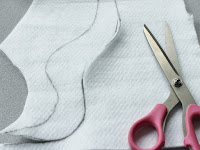

The armor looked a little dull so I decided to make some leaves and add them to the armor…it’s the great thing about doing things yourself…you can make it up as you go!
I cut a few leaves from some scrap Fosshape 600 that I had (Fosshape 600 is thicker than Fosshape 300). I stitched a few veins in each and then pinned them onto the armor. I also decided to add a collar, I just cut a strip of the Fosshape 600 and trimmed it after I pinned it in place.


As I steamed the leaves and used my gloved fingers to press them carefully against the armor, they shrank and they fused to the armor. I was able to shape them as I steamed them, so they did not end up laying flat. I was also able to roll the collar back toward the shoulder.

I’m relatively happy with how my armor has turned out, especially as this is my first attempt at building a cage/aperture like this and covering it.
I still have several things to do before this is finished; I have to paint it and I have to determine how it will be worn – will I attach it to a corset? Will I create a belt of some sort to connect the center front with the center back? I’m not sure yet.
The painting is in my future...I'm still holding out to find the right colours. I have silver and matte black to make a tarnish metal look but am hoping to find a better selection of colours when I get to a bigger city.
I had created this article in a Word File where I had total control of format and image tweaking but I found no way to bring the whole file into this blog and had to start all over. Neither the images or formatting are what they were and while it's very disappointing - at least the information is here.
The Fosshape has been shaped and hardened with steam to get this semi-final look

I used two shades of gold spray paint and painted both the corset and the armor to create a complete look. Now to determine what skirt or pants to make!







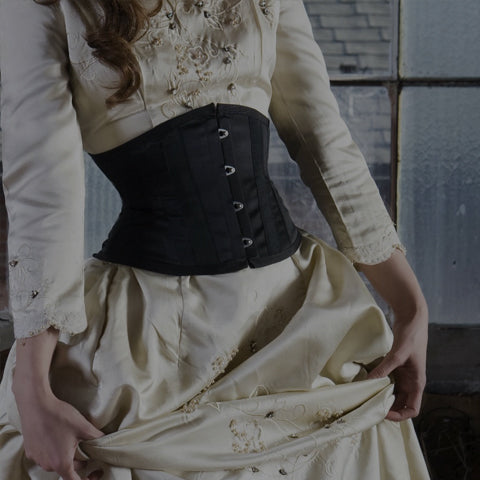

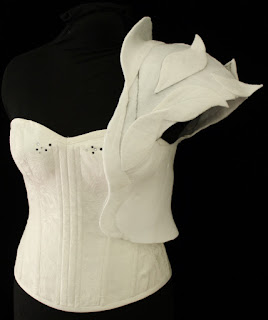
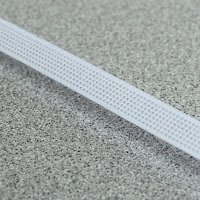
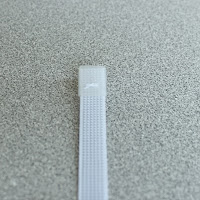
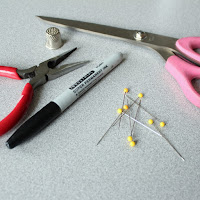
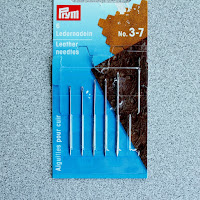
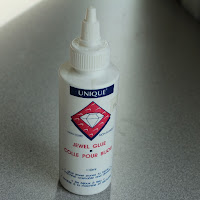

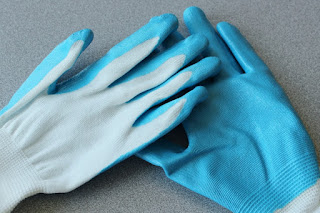
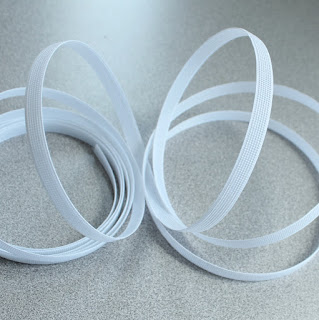


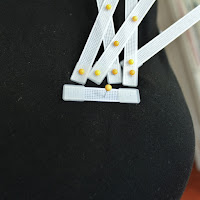
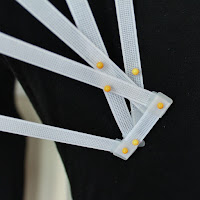
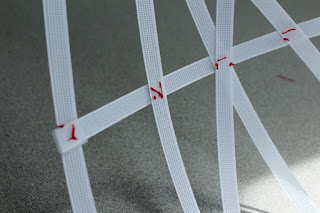
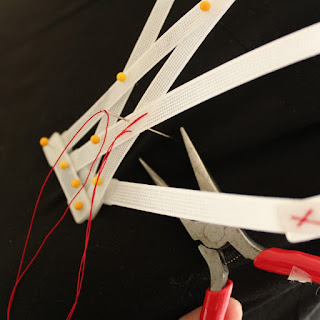
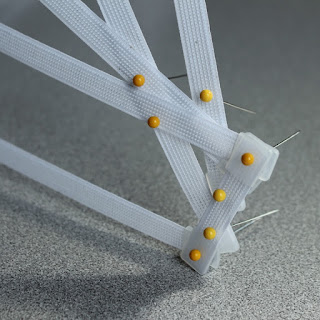
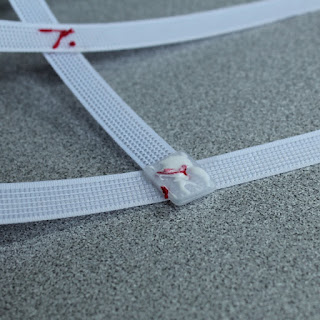
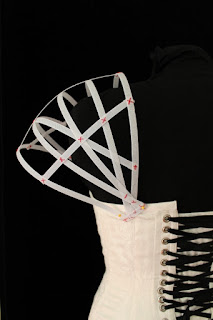













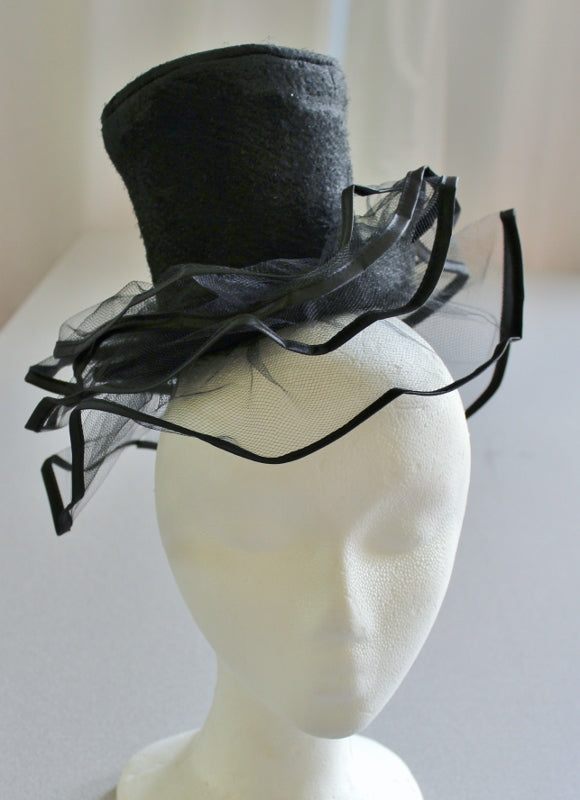
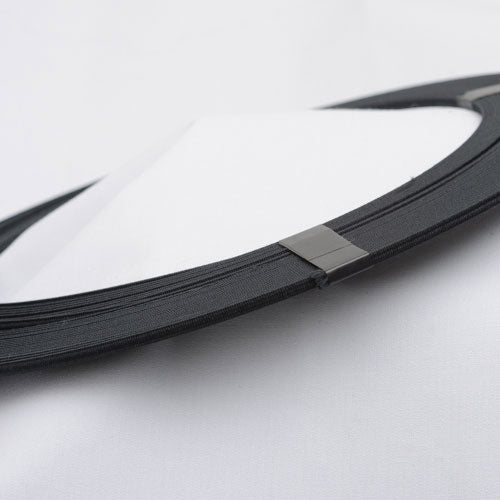
Leave a comment
All comments are moderated before being published.
This site is protected by hCaptcha and the hCaptcha Privacy Policy and Terms of Service apply.